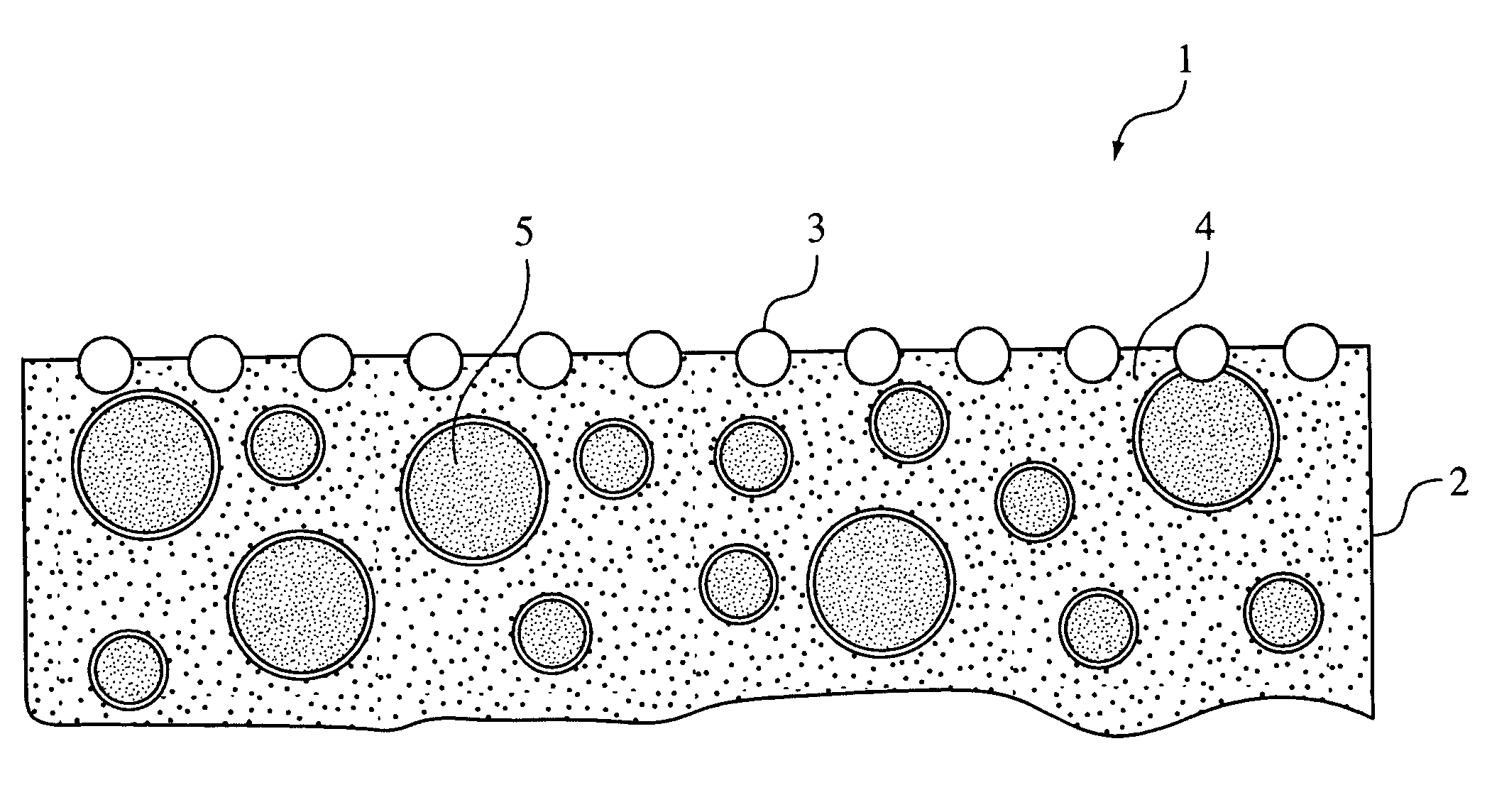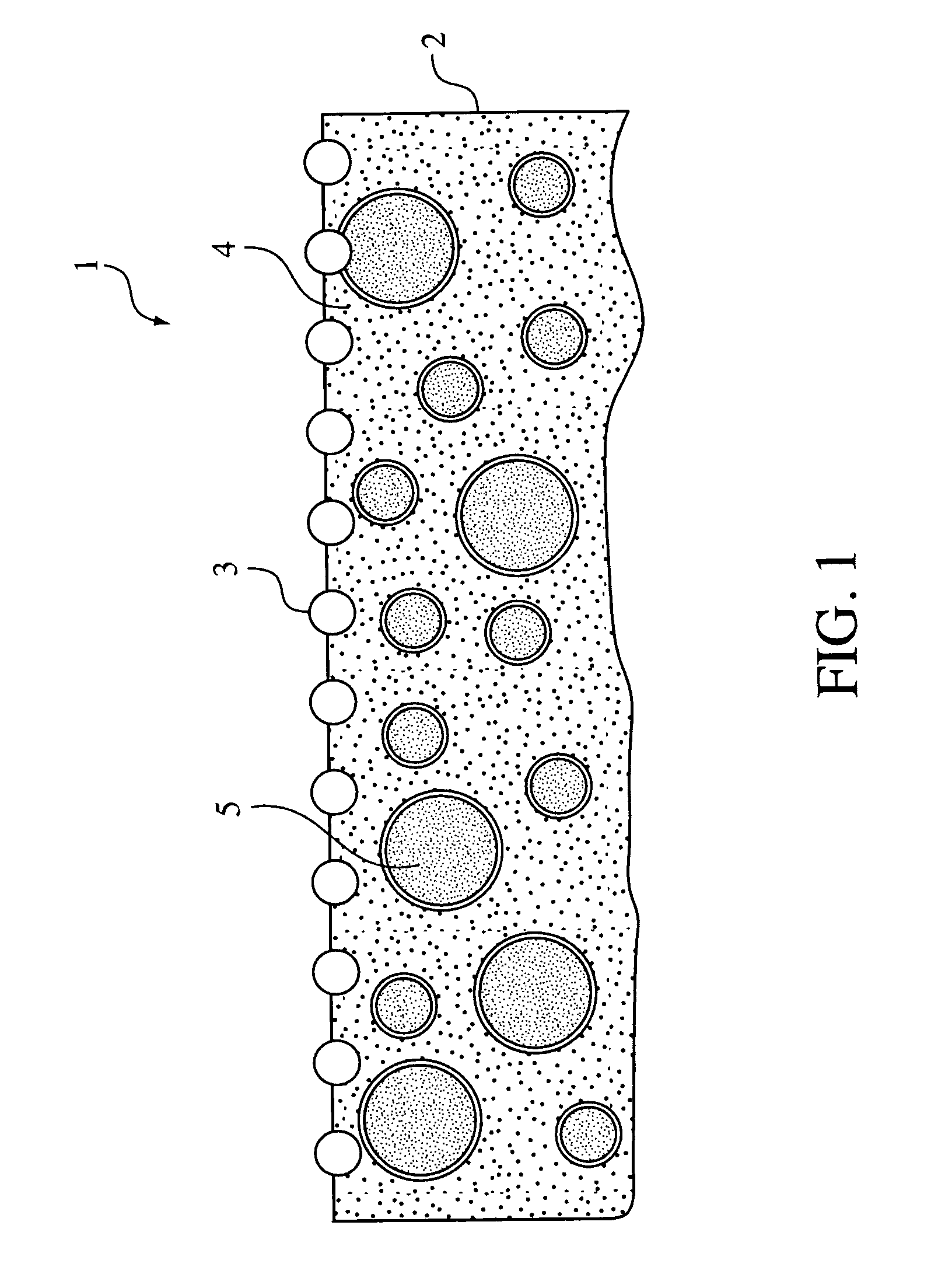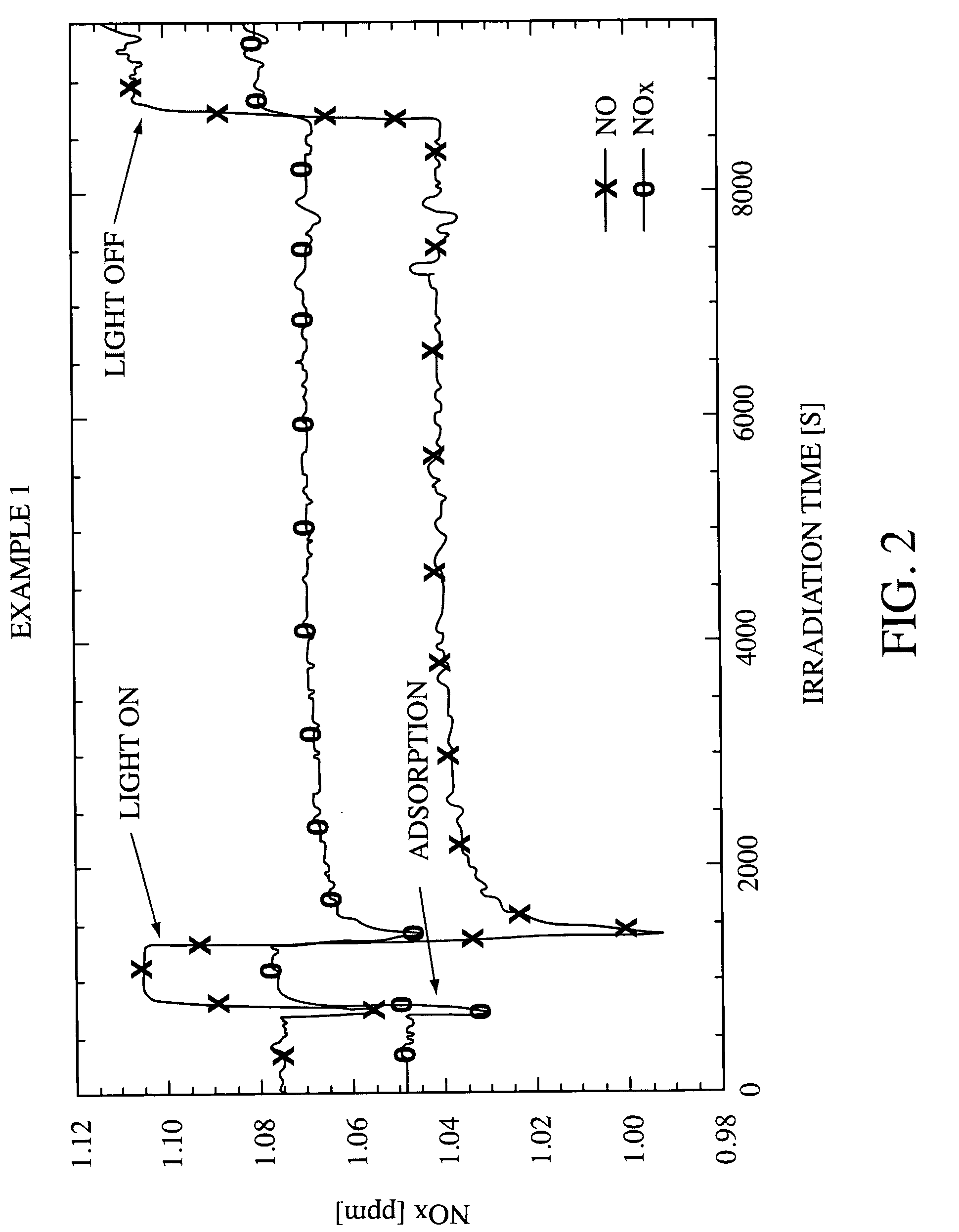Photocatalytically activated structural components composed of a matrix bound with a mineral binder, as well as method for production of the structural components
a technology of photocatalytically active nanoparticles and structural components, which is applied in the direction of metal/metal-oxide/metal-hydroxide catalysts, gas treatment, ceramic shaping apparatus, etc., can solve the problems of affecting the effectiveness of photocatalysis, and another relatively expensive method is to mix photocatalytically active nanoparticles, etc., to achieve the effect of weakening the strength
- Summary
- Abstract
- Description
- Claims
- Application Information
AI Technical Summary
Benefits of technology
Problems solved by technology
Method used
Image
Examples
example 1
[0043]A freshly batched-up concrete with a water / cement value of 0.5 is smoothed after compacting. A thin film of water forms on the surface. After about 1.5 hours, the thin film of water standing on the surface of the concrete begins to contract and the surface becomes matte damp, indicating the end of the rest phase. At this point in time, the capillary forces are optimal, and then a TiO2 pigment (specific surface about 125 m2 / g according to BET) is uniformly sprinkled over the concrete surface. The amount is 10-15 g TiO2 particles / m2. This amount corresponds to a surface coverage of about 10%. The cement hardens and fixes the pigment particles in place at the surface of the concrete.
[0044]After 28 days storage under standard conditions, at 20° C. and 65% relative humidity, the photocatalytic activity of the surface is measured.
[0045]FIG. 2 shows the photocatalytic activity of the concrete surface resulting from the decomposition of NOx or NO on a concrete sample surface 5×10 cm i...
example 2
[0049]A freshly batched-up concrete is produced in accordance with Example 1.
[0050]A thin film of water forms on the surface. After about 1.5 hours, the thin film of water standing on the surface of the concrete begins to contract—the surface becomes matte damp (end of the rest phase). Parallel to this process, a smooth PE film is electrostatically charged by rubbing it on cotton, and dusted with photocatalytically reactive TiO2 pigment (specific surface about 4 m2 / g according to BET). Immediately after the about 1.5 hours of the rest phase, the film is placed onto the dried concrete surface and weighted down with a roller, for example. Afterwards, the film is pulled off. About 5 g TiO2 particles / m2 remain on the surface (area coverage about 3%). The pigment particles are fixed in place as the cement hardens.
[0051]After 28 days storage under standard conditions, at 20° C. and 65% relative humidity, the photocatalytic activity of the surface is measured in accordance with the method ...
PUM
| Property | Measurement | Unit |
|---|---|---|
| Grain size | aaaaa | aaaaa |
| Grain size | aaaaa | aaaaa |
| Grain size | aaaaa | aaaaa |
Abstract
Description
Claims
Application Information
 Login to View More
Login to View More - R&D
- Intellectual Property
- Life Sciences
- Materials
- Tech Scout
- Unparalleled Data Quality
- Higher Quality Content
- 60% Fewer Hallucinations
Browse by: Latest US Patents, China's latest patents, Technical Efficacy Thesaurus, Application Domain, Technology Topic, Popular Technical Reports.
© 2025 PatSnap. All rights reserved.Legal|Privacy policy|Modern Slavery Act Transparency Statement|Sitemap|About US| Contact US: help@patsnap.com



